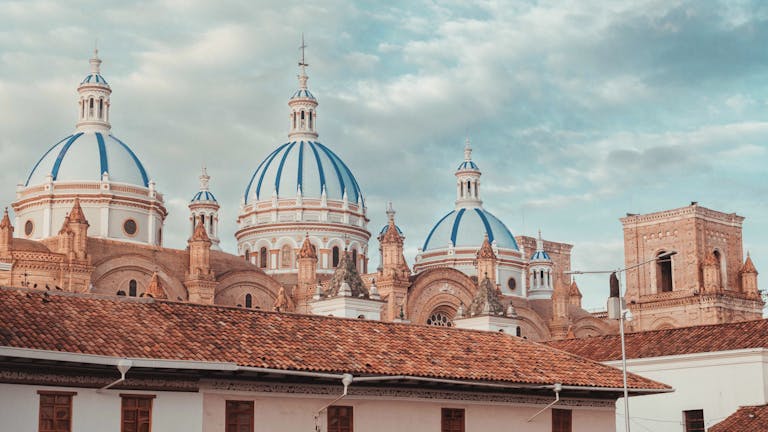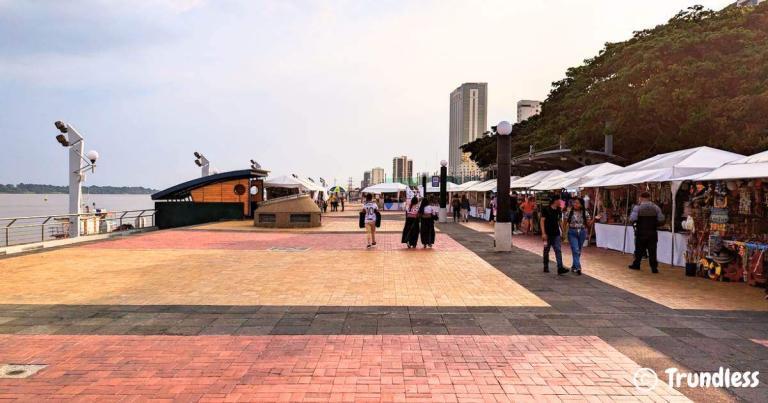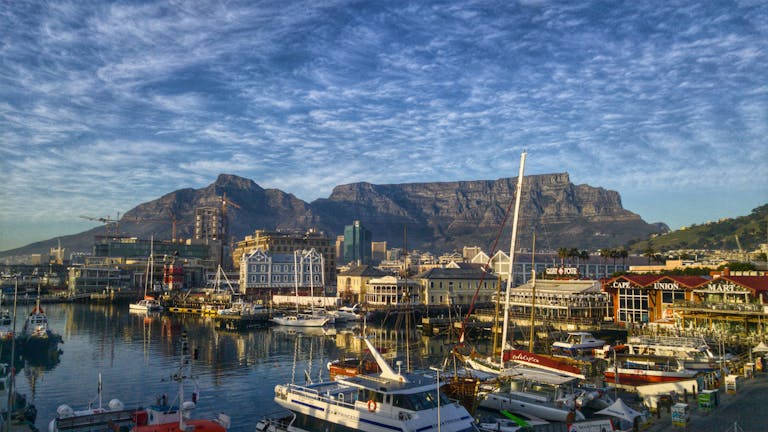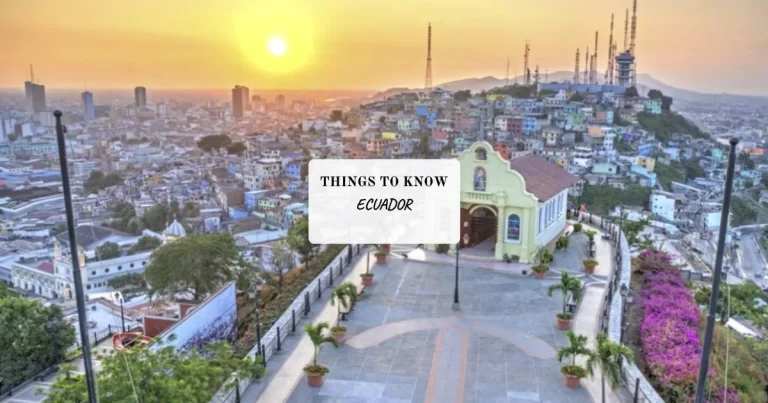Top Museums in Quito, Ecuador
Quito, the capital of Ecuador, is a lively city known for its rich history and artistic heritage. The museums in Quito play a crucial role in preserving and showcasing Ecuador’s diverse past, giving visitors a deeper understanding of indigenous cultures, colonial history, and contemporary art.
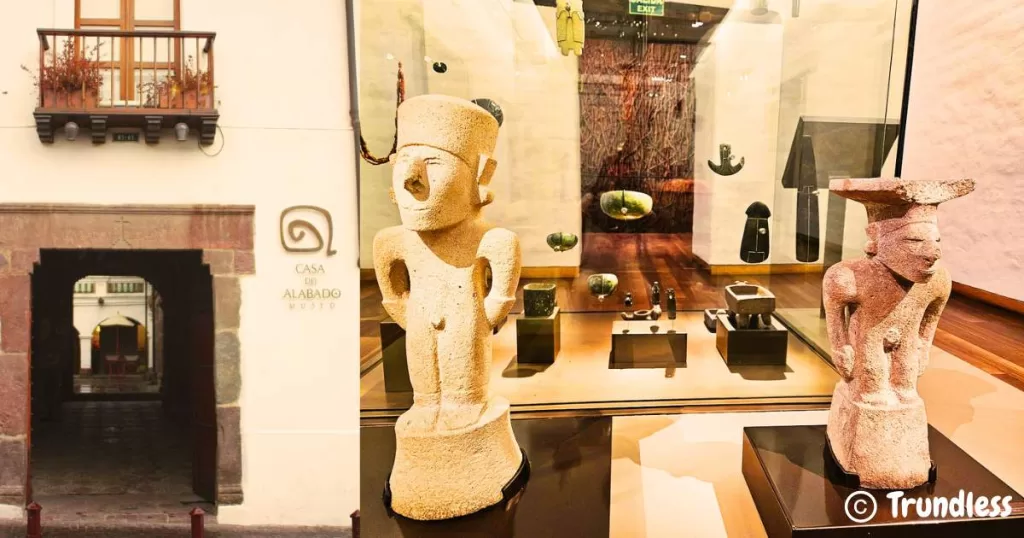
When exploring the city, it’s worth visiting these top museums:
- Museo Casa del Alabado: Featuring over 600 artifacts focused on indigenous culture.
- Museo de la Ciudad: Interactive exhibits detailing Quito’s evolution.
- La Capilla del Hombre: Showcasing Oswaldo Guayasamín’s poignant artworks.
- Museo Nacional del Banco Central del Ecuador: Home to ancient relics like gold masks and mummies.
For a well-rounded experience, explore local markets, festivals, and historic sites. This will provide a comprehensive view of Ecuador’s culture. To enhance your travel experience, consider these Top 10 Essential Travel Tips for First-Time Travelers and remember to pack these Travel Essentials for First-Time Travelers for a stress-free trip.
The Rich History of Quito’s Museums
Quito’s rich cultural history is intricately tied to its museums. These institutions serve as living guardians of Ecuadorian heritage, with collections spanning from pre-Columbian artifacts to contemporary art. They play a vital role in preserving and showcasing the diverse cultural tapestry of the region.
Historical Context of Museums in Quito
Colonial Influence
Quito’s museums reflect its colonial past, with several institutions housed in historic buildings dating back to the Spanish colonial era.
Post-Independence Development
Following Ecuador’s independence, there was a resurgence in interest towards indigenous culture and art. This period saw the establishment of museums dedicated to preserving local traditions and histories.
Role of Museums in Preserving Ecuadorian Culture and Art
Quito’s museums are more than just repositories for artifacts; they actively engage in cultural preservation through:
- Educational Programs: Many museums offer workshops, lectures, and educational outreach programs aimed at fostering an appreciation for Ecuadorian heritage among locals and visitors.
- Restoration Projects: Institutions like Museo Casa del Alabado undertake extensive restoration projects to preserve fragile artifacts, ensuring their longevity for future generations.
- Cultural Exhibits: Interactive exhibitions at places like Museo de la Ciudad provide immersive experiences that depict Quito’s evolution from ancient times to the present day.
For those interested in exploring Ecuador safely while visiting these cultural landmarks, check out this guide on safety tips which offers practical advice for travelers.
To delve deeper into Ecuador’s vibrant culture and adventure opportunities, explore more insights at Trundless – Ecuador. These resources provide comprehensive information that complements your museum visits by offering broader perspectives on the country’s rich heritage.
Top Museums to Visit in Quito
1. Museo Casa del Alabado
The Museo Casa del Alabado stands out as one of Quito’s most treasured museums, with a collection that showcases over 600 artifacts. This museum is dedicated to preserving and celebrating the rich tapestry of indigenous culture and art from Ecuador’s pre-Columbian era.
Collection Highlights:
- Artifacts: The museum houses an impressive array of pre-Columbian artifacts, ranging from intricate pottery to elaborate stone carvings. These pieces provide a deep dive into the craftsmanship and daily life of ancient Ecuadorian civilizations.
- Indigenous Cosmogony: A significant portion of the collection focuses on the indigenous cosmogony, offering insights into the spiritual and cosmological beliefs of pre-Columbian societies. This includes representations of deities, mythological creatures, and ceremonial items.
Significance:
The displayed pieces at Museo Casa del Alabado are not just historical artifacts; they are vital connectors to Ecuador’s ancestral roots. Each item tells a story about the people who created them, their rituals, their artistry, and their worldview. For anyone interested in understanding the depth of Ecuadorian heritage, this museum is indispensable.
Visitor Information:
- Hours: Open Tuesday to Sunday from 9:00 AM to 5:30 PM.
- Accessibility: The museum is equipped with facilities to accommodate visitors with disabilities, ensuring that everyone can explore its rich offerings without hindrance.
For those planning their visit, it’s worth noting that Museo Casa del Alabado provides an immersive experience that goes beyond simple exhibition. The beautifully restored colonial building itself is a piece of history, adding another layer of intrigue to your visit.
If you’re intrigued by Quito’s cultural offerings and want to explore more travel tips or city guides, check out our blog. For those concerned about safety during their travels, we have compiled essential advice in our safety guide.
2. Museo de la Ciudad
Museo de la Ciudad is located in one of Quito’s oldest buildings, a former hospital dating back to the 16th century. This historical setting adds depth to the museum experience as visitors explore Quito’s rich past.
Interactive Exhibits:
- The museum’s interactive exhibits provide an engaging journey through Quito’s evolution, from its indigenous roots to the Spanish conquest and modern era.
- Visitors can immerse themselves in scenes depicting daily life during different periods, offering a tangible connection to the city’s history.
- Displays include artifacts, dioramas, and multimedia presentations that bring Quito’s story to life.
Visitor Information:
- Hours: Open Tuesday to Sunday from 9:30 AM to 5:30 PM.
- Accessibility: The museum is wheelchair accessible and offers guided tours for a more in-depth experience.
Exploring Museo de la Ciudad provides insight into the transformation of Quito over centuries, making it a must-visit for those interested in the city’s historical tapestry.
3. La Capilla del Hombre
La Capilla del Hombre is a museum that showcases the incredible talent and lasting impact of Oswaldo Guayasamín, one of Ecuador’s most renowned artists. His distinctive perspective and deep dedication to addressing societal issues through art are prominently featured in this museum.
Who is Oswaldo Guayasamín?
Oswaldo Guayasamín devoted his life to creating art that reflects human suffering and the struggles of indigenous communities. His paintings, characterized by bold lines and expressive forms, serve as powerful critiques of social injustices. Through his art, Guayasamín aimed to amplify the voices of the marginalized and emphasize the inherent worth of every individual.
Must-See Artworks
At La Capilla del Hombre, visitors can expect to see some of Guayasamín’s most important works, such as:
- “La Edad de la Ira” (The Age of Wrath): A series depicting the anguish and misery inflicted by war and injustice.
- “Manos de la Protesta” (Hands of Protest): A symbolic artwork representing resistance and strength.
These pieces not only captivate with their emotional depth but also inspire deeper contemplation on global social issues.
What to Expect During Your Visit
La Capilla del Hombre offers an immersive experience with its striking architecture designed to complement Guayasamín’s powerful works. The museum is open from Tuesday to Sunday, 10 AM – 5 PM. Accessibility is prioritized with ramps and elevators available for those with mobility challenges.
Exploring La Capilla del Hombre provides a profound insight into both the artistic landscape of Quito and the broader cultural and social narratives within Ecuador. This museum not only showcases art but also serves as a beacon for human rights advocacy.
4. Banco Central – Museo Nacional del Banco Central del Ecuador
Banco Central – Museo Nacional del Banco Central del Ecuador offers a deep dive into the country’s rich history, boasting an extensive collection that spans from ancient civilizations to modern times. The museum’s diverse array of artifacts provides a comprehensive look at Ecuadorian culture through the ages.
Key highlights include:
- Pre-Columbian Artifacts: These pieces offer insights into the indigenous cosmogony and daily life of ancient civilizations. The collection includes intricately crafted ceramics, stone sculptures, and ceremonial items.
- Gold Masks and Canari Mummies: Among the most notable artifacts are the gold masks used in burial rites and the well-preserved Canari mummies. These items provide a unique glimpse into the funerary practices and beliefs of pre-Columbian societies.
- National Artwork Collection: The museum also features an impressive assortment of colonial and contemporary art, showcasing the evolution of artistic expression in Ecuador.
For visitors, the museum is conveniently located within Quito, making it accessible for those exploring the city. Operational hours are generally from 9 AM to 5 PM, Tuesday through Sunday. This schedule allows ample time to immerse oneself in the rich tapestry of Ecuadorian heritage preserved within its walls.
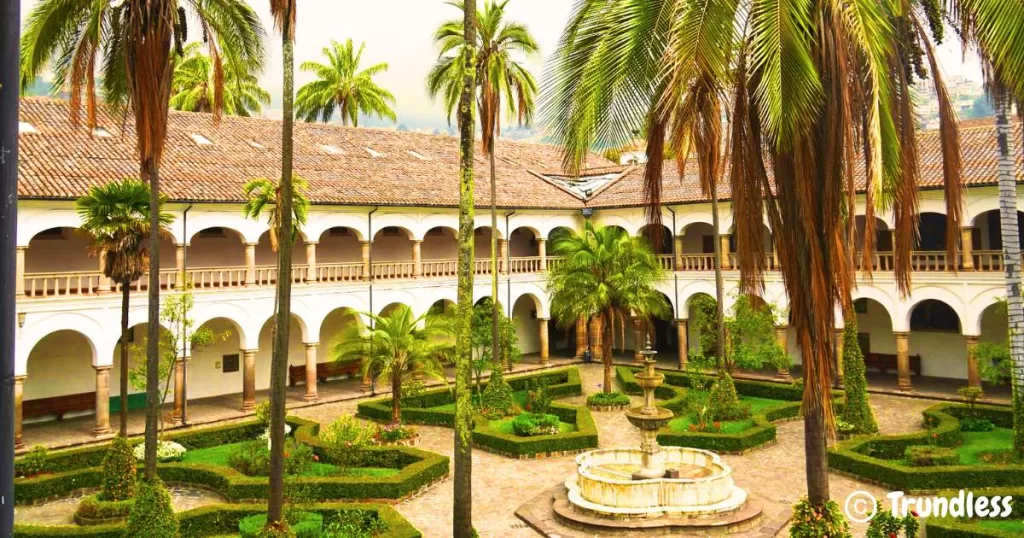
5. Centro Cultural Metropolitano (CCMQ)
Centro Cultural Metropolitano (CCMQ) is a lively cultural center in Quito that blends historical and modern elements. It features a wax museum and various exhibition spaces, offering visitors a diverse experience.
Facilities and Exhibitions:
- Wax Museum: CCMQ’s wax museum vividly illustrates Ecuador’s history through lifelike figures, offering an immersive educational experience.
- Exhibition Spaces: The center hosts a range of temporary exhibitions, showcasing both historical artifacts and modern art.
Types of Exhibitions:
- Historical Displays: Often featuring Pre-Columbian artifacts and exhibitions on indigenous cosmogony, these displays offer deep insights into Ecuador’s rich heritage.
- Contemporary Art: Regularly updated exhibits spotlight the work of local artists, promoting Ecuadorian talent and fostering cultural exchange.
Importance for Local Artists:
CCMQ plays a crucial role in the local art scene by providing a platform for emerging artists. This support is vital for nurturing creativity and ensuring the preservation and evolution of Ecuador’s artistic landscape.
Whether you’re intrigued by historical narratives or contemporary creations, CCMQ offers a comprehensive look into Ecuadorian culture.
6. Centro de Arte Contemporaneo (CAC)
The Centro de Arte Contemporaneo (CAC) is a leading center for contemporary art in Quito. Its mission is to promote modern artistic expressions through various exhibitions and events. From innovative installations to multimedia performances, CAC provides a vibrant space for contemporary artistry.
Located in a historically significant building that was once a military hospital, the CAC has undergone a transformation into an art center. The unique architecture blends historical features with modern design, creating an inspiring atmosphere for artists and visitors alike.
Highlights of CAC:
- Events and Exhibitions: Regularly hosts cutting-edge art exhibitions, workshops, and cultural events.
- Architecture: The blend of old and new in the building’s design enhances its appeal.
- Location: Situated in the vibrant San Juan neighborhood, easily accessible to both locals and tourists.
By visiting the CAC, you gain insight into Ecuador’s contemporary art scene while appreciating the historical significance of its setting.
7. Museo Mena Caamano
Museo Mena Caamano offers a unique journey through Quito’s vibrant history using detailed wax figures. This waxworks museum captures significant moments and personalities from different eras, making it an interactive educational experience for visitors of all ages.
Exhibition Highlights:
- Wax Figures: The museum showcases a large collection of life-like wax figures representing various historical figures and everyday people from Quito’s past. These figures are meticulously crafted to provide an accurate representation of the city’s cultural evolution.
- Historical Representation: Each exhibit is designed to tell a story, providing insights into the lives, attire, and customs of different periods in Quito’s history. The attention to detail in the costumes and settings creates an immersive atmosphere that transports you back in time.
Visitor Information:
- Hours: Museo Mena Caamano is open Tuesday to Sunday from 9:00 AM to 5:00 PM. It’s closed on Mondays, allowing for maintenance and updates to the exhibits.
- Accessibility: The museum is centrally located and accessible by public transport. There are provisions for visitors with disabilities, ensuring everyone can enjoy the rich historical narratives on display.
Exploring Museo Mena Caamano not only enriches your understanding of Quito’s past but also complements visits to other notable museums like Museo Casa del Alabado and Centro de Arte Contemporaneo (CAC). Each museum in Quito offers unique perspectives and invaluable insights into Ecuadorian culture and heritage.
8. Convento de San Francisco
The Convento de San Francisco holds a paramount place in Quito’s religious history. Established in the 16th century, it is not only one of the oldest and largest colonial structures in the city but also a symbol of spiritual and cultural heritage. This historic convent showcases an impressive collection of Colonial era art, adding depth to its already significant presence.
Key artworks and furniture on display include:
- La Virgen de Quito: A stunning representation of the Virgin Mary, which has become an iconic symbol of the city.
- Baroque altarpieces: These intricate works exemplify the blend of European techniques and indigenous artistry, reflecting the complex history of Ecuador’s colonization.
- 17th-century choir stalls: Exquisitely crafted wooden seats used by monks during prayers, demonstrating remarkable craftsmanship.
Visitors can also admire the convent’s historic architecture. The cloisters, courtyards, and chapels are steeped in centuries-old history, offering a glimpse into Quito’s past. The richly decorated interiors and the serene ambiance make this site a must-visit for anyone interested in understanding Ecuador’s religious and cultural narratives.
9. Museo Nacional del Ecuador
Museo Nacional del Ecuador offers an immersive journey through the country’s rich cultural tapestry, making it a must-visit for anyone keen on understanding Ecuadorian history.
Interactive exhibits at the museum are designed to engage visitors with hands-on experiences. These exhibits cover various aspects of Ecuador’s past, from Pre-Columbian artifacts to contemporary art pieces, providing a comprehensive view of the nation’s evolution. Highlights include:
- Pre-Columbian Artifacts: Featuring a vast collection that illuminates indigenous cosmogony and daily life.
- Modern Art Section: Showcasing Ecuador’s artistic developments through the ages.
- Cultural Insights: Interactive displays that delve into traditional customs and practices.
Located in the bustling center of Quito, near major landmarks such as the Plaza Grande, the museum is easily accessible. It provides an excellent starting point for exploring the city’s historical and cultural offerings.
Visitor Information:
- Hours: Open Tuesday to Sunday, from 10 AM to 6 PM
- Accessibility: Fully accessible for visitors with disabilities
For those looking to deepen their understanding of Ecuador beyond just visual appreciation, Museo Nacional del Ecuador stands out as a beacon of cultural education.
Conclusion and Other Museums to see
Exploring the 9 best museums in Quito offers a captivating journey through the history and culture of Ecuador. Within the historic center of Quito, the national museum, dedicated to the history of Ecuador, stands as a major attraction. This museum is located in the old town and is a must-see during any tour of Quito. The National Museum of Ecuador showcases pre-Columbian art and the fight for independence, providing insights into the country’s rich past. Another interesting museum is the Guayasamín House Museum, designed by the painter Oswaldo Guayasamín, a renowned Ecuadorian artist. It is located very close to the Chapel of Man and offers a unique look at colonial and modern art.
The Caamaño Museum and Casa Museo of Manuela are also notable for their displays of colonial art and handicraft. Meanwhile, museum exhibits at the old hospital, the first hospital in the city, reflect Quito’s evolution. The historic center also includes the church and convent of Sucre, which are worth a visit. Beyond Quito, the Mitad del Mundo and the Otavalo Market offer cultural experiences. For those interested in the natural world, the Galapagos showcases Ecuador’s unique biodiversity.


